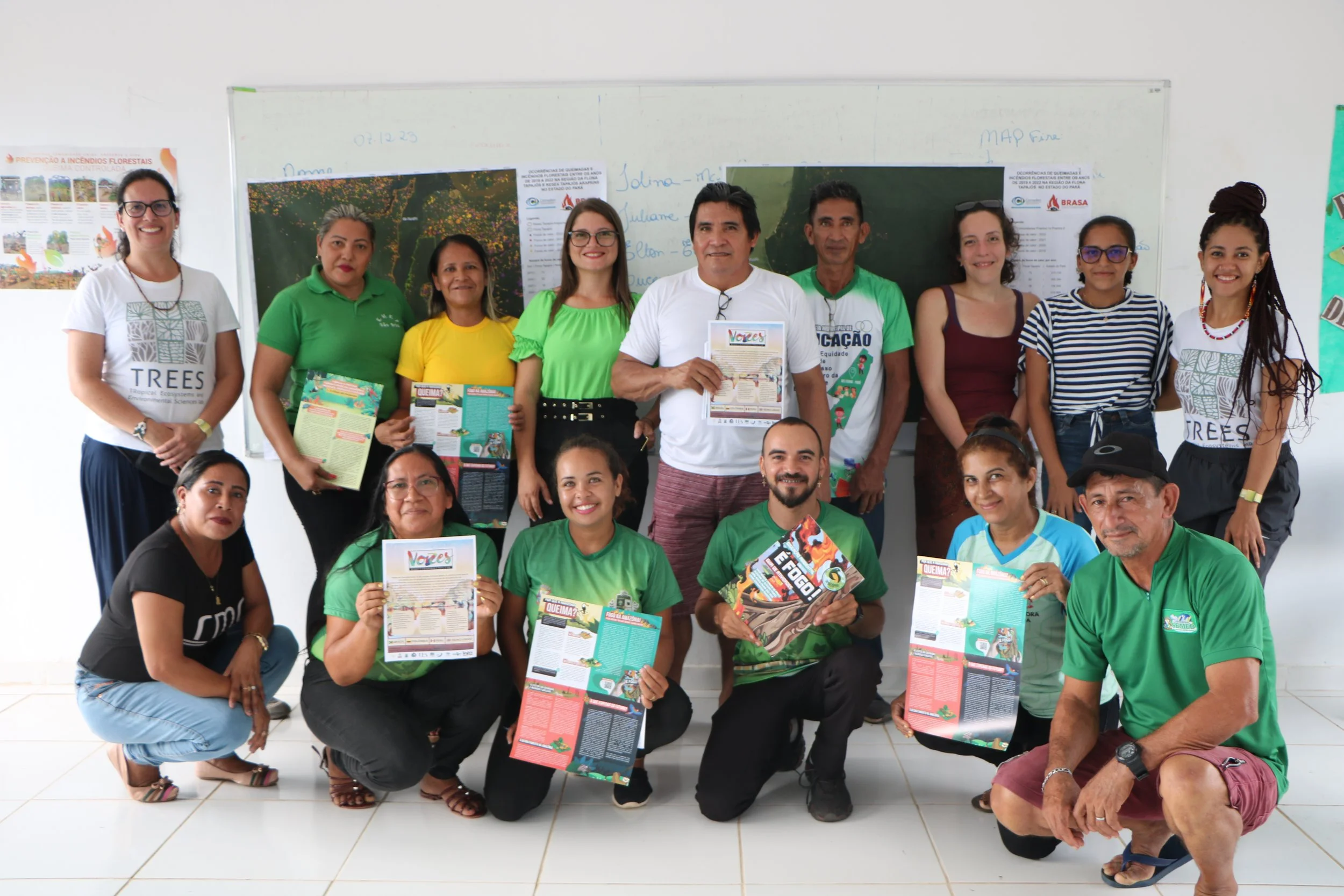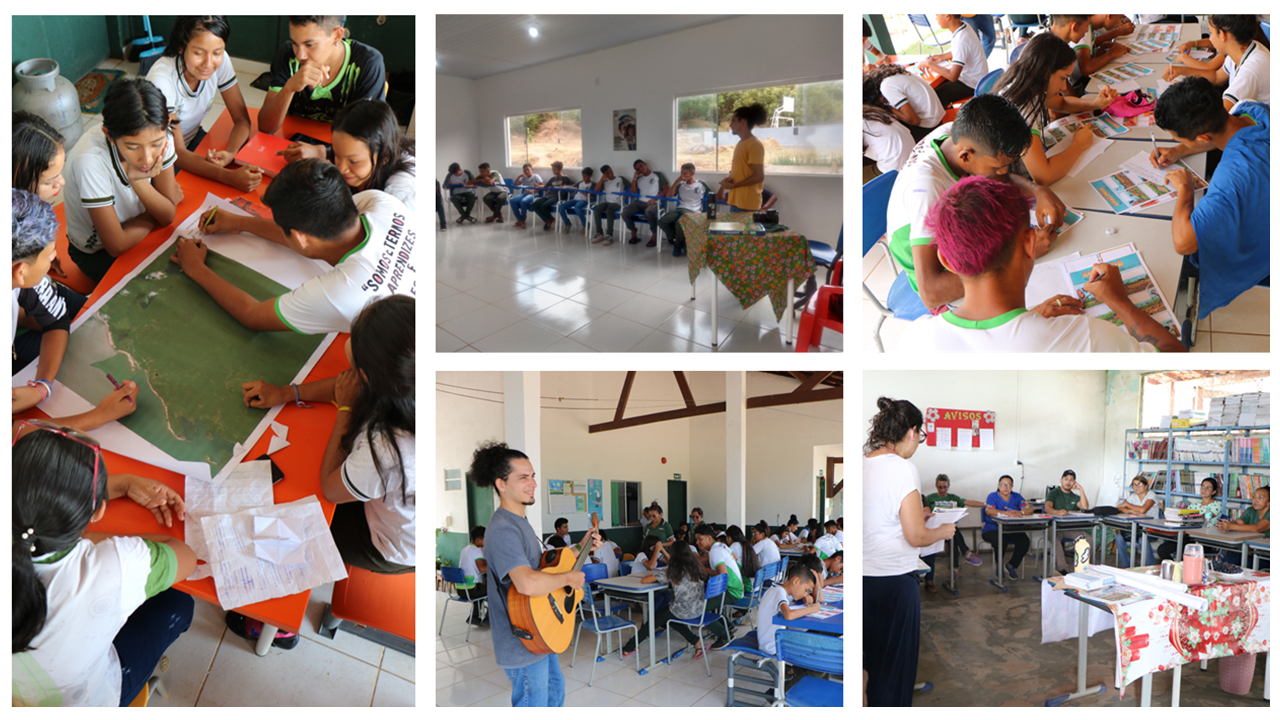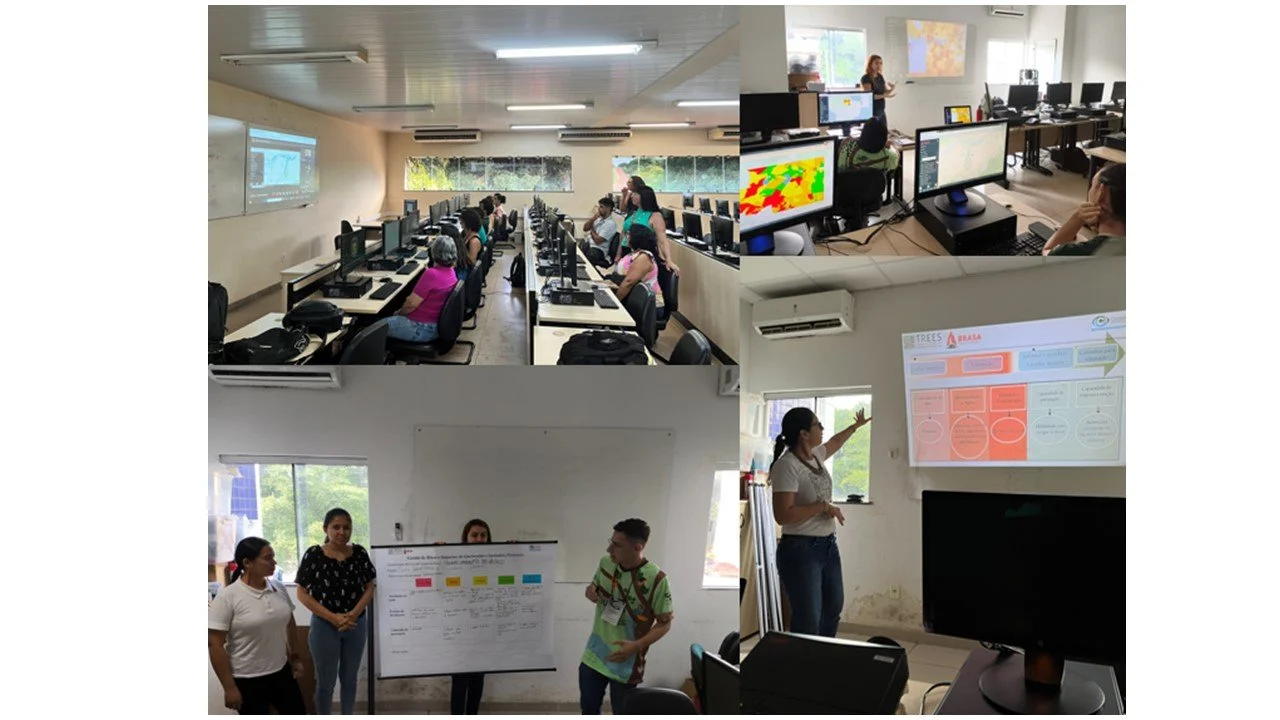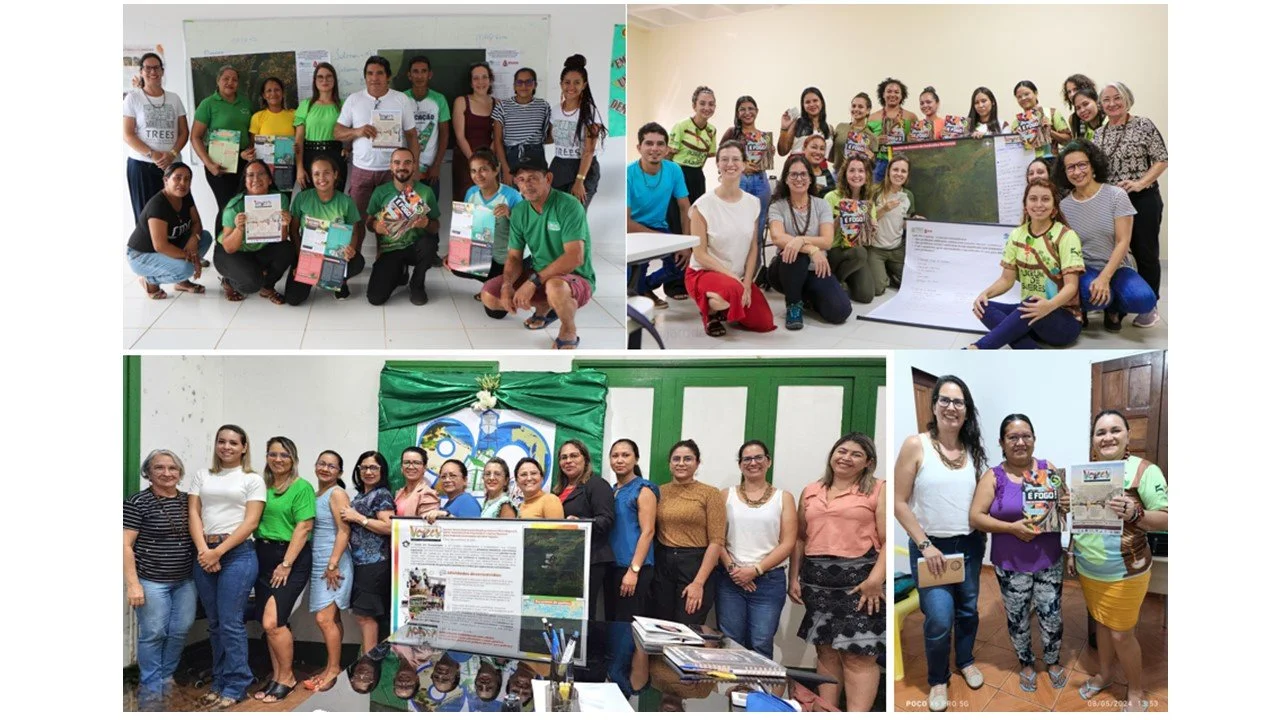
Co-production and support
Co-creation and training
The Voices of Recovery project was made possible thanks to the permission and involvement of the people who make up the traditional communities (quilombolas, indigenous peoples, extractivists and riverside dwellers) living in the region where we launched the project, including them, the staff and students of the visited schools, community members and their leaders who welcomed us, cooked for us and hosted us; the collaboration of professionals in the field of education and research who guided us; and the institutions operating in Pará: the Municipal Education Departments of Santarém and Belterra, Chico Mendes Institute for Biodiversity Conservation (ICMBio) - governing body of Flona Tapajós and Resex Tapajós-Arapiuns, Federal University of Pará, Saúde e Alegria Project (Health and Happiness project), Alter Brigades, Tapajoara Association and Coomflona Association and Mureru Eco Institute.
Throughout the four years of implementation, various collaborative activities were carried out that made possible the co-creation of maps, the training of communities in the use of a platform for environmental monitoring and educational material; in addition to the participatory development of communication, educational materials, and recommendations.
Training how to use the SEM-FLAMA Platform
SEM-FLAMA is a free online platform for environmental monitoring and risk management, specific to the Flona Tapajós region, Resex Tapajós-Arapiuns and the surrounding municipalities. It provides technical elements that help local populations work with the responsible agencies, improving their organisational, self-protection and communication capacities.
We trained different social groups on how to use the platform, how to monitor forest fire occurrences in the FLONA Tapajós and RESEX Tapajós-Arapiuns regions, and how to build a specific action plan, based on a probability scale of occurrences. The platform is an important tool to amplify and strengthen the voices of communities in their demands related to threats and risks in their territories. Social organisation and risk communication are fundamental for both tools to function as instruments for socio-environmental risk management, with local communities as protagonists and with improved capacity for self-protection and threat perception.
Training on the use of educational material: 'It's fire! The Amazon'
Teachers from eight schools were trained in the use of the educational material “It’s Fire! The Amazon”, including discussions on the particularities and similarities faced by the communities of the Resex and Flona and those of the Pantanal biome. The material was also presented to the municipal education departments (SEMEDs) of Santarém, Belterra, ICMBio, and to the Tapajoara and Coomflona Associations.
The guide “It's Fire! The Amazon” was created to spark students' curiosity, observation, and interest in monitoring socio-environmental conditions, focusing on forest and vegetation fires.
The training operates as multiplier workshops; it is expected that teachers will reproduce it among students and colleagues. One of the products resulting from the training with the material "It's Fire! Amazon" was the development of the short film "Fire in the Field", written by students of the 6th and 7th grades of Santa Filomena School, Flona Tapajós, Belterra, Pará, and directed by teachers Lucenir Souza and Lauriane Farias Nobre, in 2023 and released at the Puxirum de Saberes event organised by ICMBio and the communities of Flona and Resex in April 2024.
Co-creation of educational materials
The co-creation of educational materials, such as comic books, drawings and the exchange of messages through letters between young people from communities in Brazil and Colombia, helped raise awareness of the risks and give visibility to their views and world representations. In the case of comic books, students from Elementary and High School levels at Flona Tapajós and Resex Tapajós-Arapiuns schools who took part in the project created their stories based on the title - Amazon: Present, Past and Future - and previously presented drawings, with the task of giving voice and meaning to the characters. The stories were gathered, and based on the texts analysed from all the students, we compiled a single story with a narrative that was representative of the material from that school. Ultimately, the material was printed on high-quality paper, and copies were distributed to all students who participated in the activity, the teachers, and the Municipal Education Authorities of Santarém and Belterra.
Children’s book
The book will be developed in collaboration with the teachers of the schools that participated in the Voices of Recovery project. The book will show, from a historical perspective, the environmental, climatic and social changes that have occurred in the Amazon and will include the COVID-19 pandemic. Surveys were conducted on the elements, aspects and views that young people consider important in their lives and communities to be represented in the book. For this, we used guided walks by children, drawing workshops and storytelling to capture the visions, imagination and interpretations of everyday life. The general idea of the book was established with the storytelling by 'Grandma Zona', an ancient Samaúma tree, which has a unique meaning not only for the residents of the two protected areas, but also shared by many communities throughout the Amazon.
Booklet with recommendations
The material under development presents the results of discussion sessions with teachers from eight schools in the Resex Tapajós-Arapiuns and Flona Tapajós. The content was divided into barriers, opportunities and general recommendations. The recommendations aim to strengthen the capacities of the school community and improve quality of life through actions to prevent and address existing and future risks, as well as to encourage being proacte and the development of local actions and public policies (projects, programmes, laws, etc.).








Training in social mapping of socio-environmental risks
In the schools of Flona Tapajós and Resex Tapajós-Arapiuns, we trained teachers and students in the creation of social maps based on high-resolution satellite images, starting from basic cartography concepts such as scale, legend and orientation. Later, landmarks were identified and reflections were made about the territory in which they live and how they interrelate, as well as the role of the forest and rivers in their lives. The collective construction allowed the integration of knowledge across different generations and perspectives and encouraged discussions on how extreme river droughts and floods, smoke from fires and other socio-environmental problems affect them and where these events occur in or beyond the territory. Based on the points raised, they developed thoughts on possible strategies for mitigating risks and impacts of these threats, which were georeferenced on the map.
The co-created maps encompass a wide range of local information that can be used for various community planning purposes, including engaging and seeking institutional support (ICMBio, etc.), implementing actions and establishing new plans (communication, action, etc.). Additionally, the co-created maps are also tools to strengthen and amplify local voices, as they present the communities' needs in an organised and structured manner.